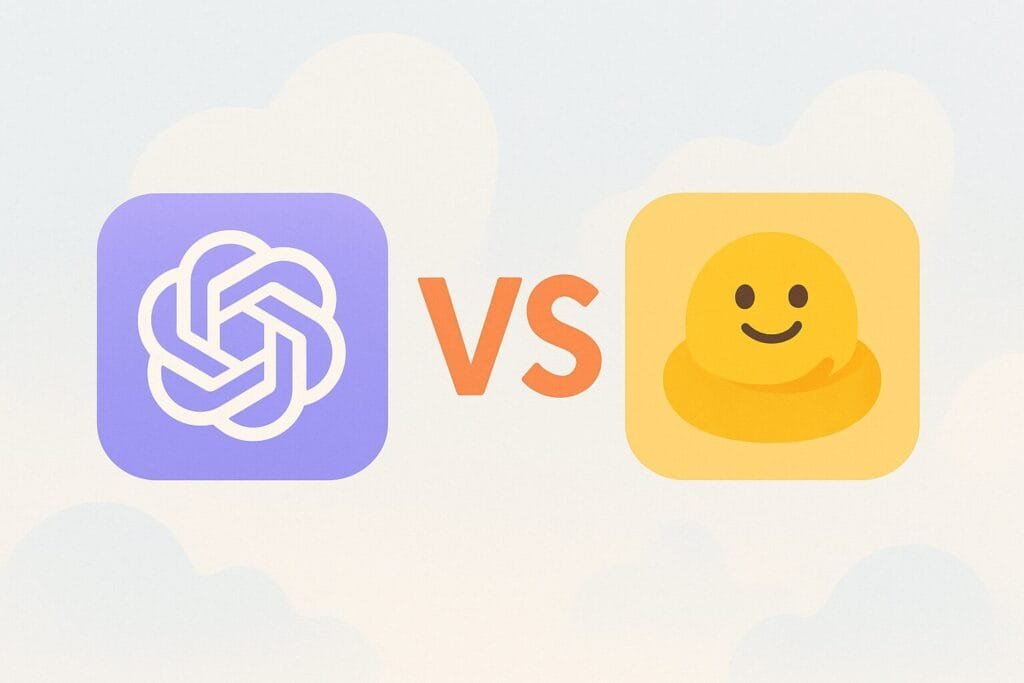In the rapidly evolving world of artificial intelligence (AI), two major players have emerged as industry leaders — OpenAI and Hugging Face. Both companies are at the forefront of research, model development, and open-source contributions. But which one is truly leading the wave of AI innovation? Let’s explore their strengths, differences, and impact on the global AI ecosystem.

1. Overview of OpenAI and Hugging Face
OpenAI was founded in 2015 with a mission to ensure that artificial general intelligence (AGI) benefits all of humanity. Known for products like ChatGPT, DALL·E, and Codex, OpenAI has positioned itself as a pioneer in the field of large language models (LLMs). Its technology powers countless applications, from content creation to coding assistants and enterprise AI solutions.
Hugging Face, on the other hand, began as a chatbot startup in 2016 and evolved into one of the world’s most important open-source AI platforms. Its Transformers library and the Hugging Face Hub have become central to AI research and development, providing models, datasets, and tools that make AI accessible to everyone.
2. Company Philosophies and Missions
While both companies aim to accelerate AI development, their philosophies differ significantly.
| Aspect | OpenAI | Hugging Face |
|---|---|---|
| Foundation Year | 2015 | 2016 |
| Core Philosophy | Responsible AGI development for human benefit | Democratize AI through open-source collaboration |
| Approach | Commercial + Research-driven | Community-driven + Open-source |
| Main Product | ChatGPT, GPT models, DALL·E | Transformers, Datasets, Spaces |
| Access Model | Partially closed source | Fully open source |
3. OpenAI’s Key Strengths
OpenAI has revolutionized AI with its generative models. Its flagship product, ChatGPT, redefined human-computer interaction by allowing natural, context-aware conversations. The integration of GPT models into platforms like Microsoft Copilot demonstrates OpenAI’s significant impact on productivity tools and business automation.
Additionally, OpenAI has heavily invested in multimodal AI — systems capable of understanding text, images, and audio. With GPT-5 rumored to advance reasoning and vision capabilities, OpenAI continues to push the limits of what AI can achieve in creativity, learning, and problem-solving.
4. Hugging Face’s Key Strengths
Hugging Face’s greatest strength lies in its community and open-source ecosystem. Its Hugging Face Hub hosts over 500,000 machine learning models and datasets contributed by developers and researchers around the world. The company promotes transparency, collaboration, and accessibility — making cutting-edge AI available to individuals, startups, and large corporations alike.
Its Transformers library supports numerous architectures such as BERT, RoBERTa, and GPT variants, enabling developers to fine-tune models for natural language processing (NLP), image recognition, and even speech synthesis. Furthermore, tools like AutoTrain simplify model training for non-experts, further democratizing AI development.
5. Community vs. Commercial Ecosystem
One of the biggest differences between OpenAI and Hugging Face is their approach to openness. OpenAI has transitioned toward a more commercial model, offering API access through paid subscriptions and enterprise licenses. In contrast, Hugging Face emphasizes open access, allowing developers to freely explore, modify, and deploy AI models.
This divergence influences how innovation spreads across the industry. OpenAI drives innovation through deep research and proprietary models, while Hugging Face fosters collaborative growth by empowering the developer community to build upon shared knowledge.
6. Enterprise Adoption and Use Cases
OpenAI has become a major force in enterprise AI adoption. Through partnerships with companies like Microsoft Azure and Slack, its models are embedded into productivity tools used by millions worldwide. Businesses leverage OpenAI’s APIs for chatbots, customer service automation, and code generation.
Hugging Face, meanwhile, has gained popularity among developers and research teams. Enterprises use Hugging Face models to fine-tune solutions for sentiment analysis, language translation, and image classification. Its emphasis on open data and customizable models makes it a top choice for companies that value transparency and control over their AI stack.
7. Ethical AI and Transparency
OpenAI advocates for safe and aligned AGI but has faced criticism for limited transparency in its model training methods. Hugging Face, by contrast, champions open ethics — sharing documentation, datasets, and even model cards that explain potential biases and limitations.
This openness fosters accountability and trust, ensuring that developers understand how AI models behave in different contexts.
8. The Future of AI Innovation
As we look toward the future, both companies are expected to continue shaping the AI landscape in different but complementary ways. OpenAI will likely focus on advancing AGI and commercial integration, while Hugging Face will strengthen open-source collaboration and interoperability among models and datasets.
In the end, innovation is not just about who leads — it’s about how they contribute to the ecosystem. OpenAI drives frontier breakthroughs, while Hugging Face empowers the world to participate in those breakthroughs.
Conclusion
The battle between OpenAI vs Hugging Face is not a rivalry to declare a winner but a collaboration pushing the boundaries of human creativity and intelligence. OpenAI’s proprietary expertise and Hugging Face’s open-source philosophy form two essential pillars of modern AI innovation.
Whether you are a developer, researcher, or business owner, understanding both ecosystems gives you a strategic advantage in navigating the rapidly growing AI landscape.
Ultimately, both OpenAI and Hugging Face are not just leading AI innovation — they are defining its very future.

